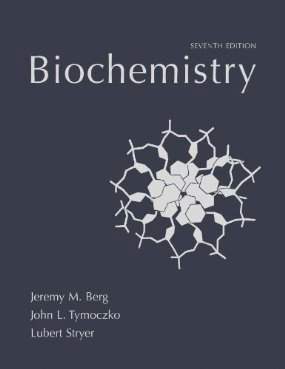Connecting...

This is a quick preview of the lesson. For full access, please Log In or Sign up.
For more information, please see full course syllabus of Biochemistry
For more information, please see full course syllabus of Biochemistry
Biochemistry Protein Function II: Hemoglobin
Lecture Description
Hemoglobin (Hb) has 4 subunits, each of which has a heme group capable of binding an O₂ molecule. In order to carry oxygen from the lungs to tissue cells, the hemoglobin must bind the oxygen tightly, but also release it at the right time based on concentration and partial pressures of O₂. The tense (T) state occurs when no oxygen is bound (deoxyhemoglobin), while the protein becomes more fully in the relaxed (R) state when oxygen begins to bind. Each oxygen makes it easier for the next to bind—it increases Hb’s affinity for O₂ (cooperative binding). This lecture also discusses structural changes in Hb as oxygen binds and a quantitative description of cooperative binding based on the Hill equation.
Bookmark & Share
Embed
Share this knowledge with your friends!
Copy & Paste this embed code into your website’s HTML
Please ensure that your website editor is in text mode when you paste the code.(In Wordpress, the mode button is on the top right corner.)
×
Since this lesson is not free, only the preview will appear on your website.
- - Allow users to view the embedded video in full-size.
Next Lecture
Previous Lecture










































 Answer Engine
Answer Engine




0 answers
Post by Curtis Marriott on November 4, 2020
prof. Great lectures as always. Just out of Curiosity can you plot hill equation in desmos? if so Can you be specific and let me know how, please.
Thank you
kind regards Curtis
1 answer
Sat Oct 10, 2015 8:00 PM
Post by Kenny Patel on October 10, 2015
At 17:13 did you mean to say myoglobin or am I not understanding correctly?
1 answer
Sun Jun 29, 2014 6:01 PM
Post by Sitora Muhamedova on June 29, 2014
I cannot describe how much grateful I am for your wonderful lectures!
1 answer
Sun Sep 15, 2013 6:29 AM
Post by Vinit Shanbhag on September 14, 2013
Hey Raffi,
What is the difference between alpha and (alpha/1-alpha). Alpha is the fractional occupancy as you said in the last lecture, but what does the y axis in the hill plot actually mean??